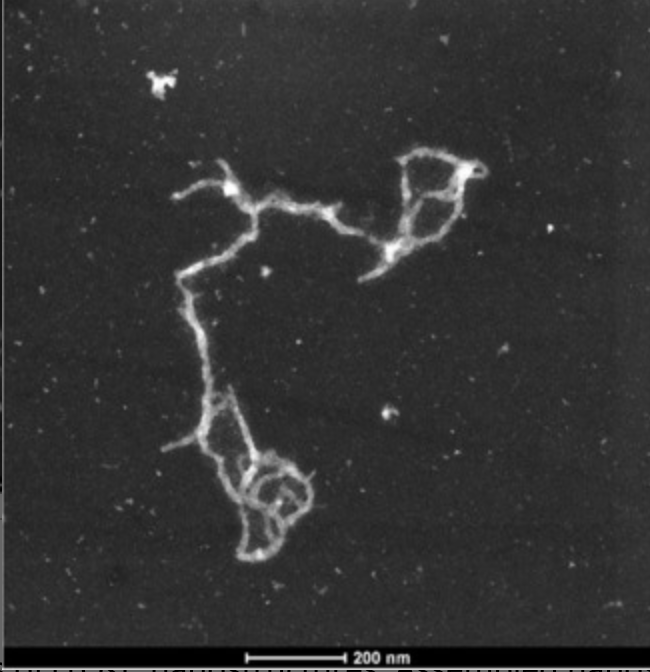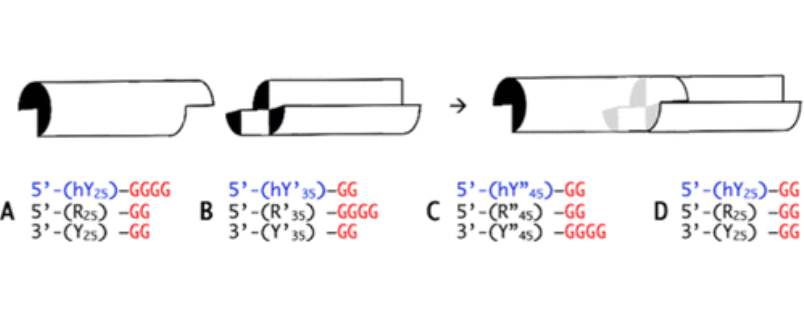Project Overview

I conceived an original approach to create elongated and reversible DNA nanowires. These nanowires hold substantial promise across a spectrum of applications, serving as integral components in communication modules, sensor systems, logic gates, and various other domains of DNA nanotechnology. Additionally, this approach gave rise to a novel category of DNA sticky-ends known as “Socket-Plug” complementarity, facilitating the reversible connection of blunt-ended DNA fragments. Here is the description of the two publications that came out of this work.
1.) A Long and Reversibly Self-Assembling 1D DNA Nanostructure Built from Triplex and Quadruplex Hybrid Tiles. We report a new DNA nanostructure, an extended 1-dimensional composite built for the first time out of structurally robust yet conveniently disassembled DNA triple helices, interspersed with short stretches of G-quadruplexes. These “TQ Hybrid” 1-dimensional nanostructures require potassium ions and modestly acidic pH for their formation and are easily disassembled by changes to either of these requirements. We initially prepared and characterized a “monomeric” TQ Hybrid tile; followed by “sticky” TQs tiles, incorporating unique guanine-only sticky ends, that enable efficient self-assembly via G-quartet formation of nanostructures >150 nm in length, as seen with atomic force microscopy and transmission electron microscopy. We anticipate that such DNA TQ Hybrid structures will find unique and varied application as communication modules within larger nanostructures, and as sensors, logic gates, as well as in other aspects of DNA nanotechnology.

2.) Unusual Paradigm for DNA–DNA Recognition and Binding: “Socket-Plug” Complementarity. DNA is the key informational polymer in biology by virtue of its precisely defined self-assembling properties. Watson-Crick complementarity, which underlies DNA’s self-assembly, is required not only in biology but has also proved powerful in the field of nanoscience, where it has been utilized to assemble complex 2D and 3D architectures and nanodevices built from the DNA double-helix. Aside from Watson-Crick base-pairing, however, DNA also participates in alternative base pairing schemes, giving rise to DNA triplexes and G-quadruplexes. Herein, we describe “sticky-ended” DNA triplex-quadruplex composites that specifically recognize and bind to each other using a wholly different logic, “socket-plug” complementarity, a shape-sensing fitting of guanine “prongs” into guanine-lacking “cavities.” A remarkable property of this kind of complementarity is the key role played in it by specific counter-cations: thus, exclusive “self” socket-plug recognition occurs over “other” in sodium salt solutions while precisely the reverse occurs in potassium salt solutions. We have used gel electrophoresis, Förster resonance energy transfer, alkylation protection, and structural modeling to study this remarkable fundamental property of DNA, that we anticipate will find wide practical application.

